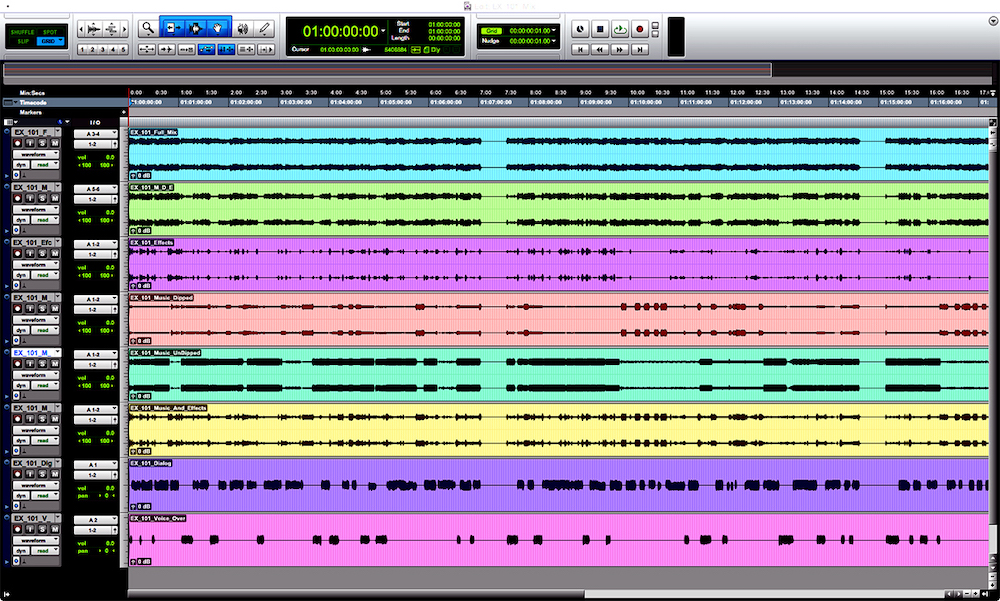If you’ve heard “stem mastering” mentioned in recent years, you’re not alone if you’re wondering what the heck it means! We’ll take a quick look at the “regular” mastering process and how stem mastering differs from it.
Let’s refresh. What is mastering, exactly?
Mastering is the final step in preparing a song or album for commercial release. This means that it takes place after mixing, so the sonic aesthetic should be established by the time a song reaches mastering.
Traditionally, mastering was the process of taking a recording from analogue tape to master disc. In the digital world, we provide mastering engineers a fully mixed and bounced down stereo file of our song(s).
What a mastering engineer does is make final, sometimes very subtle, tweaks which make a song/album sound “finished.” Mastering is an audio discipline on its own apart from recording and mixing, so those who specialize in it have incredible ears, the right gear, and highly treated rooms.
There’s a great analogy saying that mastering is like Photoshop for audio. You can buy a great camera, learn the art of photography, take beautiful photos, and sometimes things still aren’t quite right. The lighting may be off, or a smudge on the lens can ruin an otherwise perfect shot. A skilled Photoshop user can touch things up and make sure the photo is at its highest potential.
Mixing vs. Mastering
Mixing involves combining multiple layers of a song together so that they gel together. Super dense sessions could have upwards of 100 tracks! There are 5 basic technical and creative aspects of mixing to consider: levels, panning, dynamics processing, EQ, and time-based effects.
Mastering, as we’ve touched on, optimizes the overall sound of a track or an entire album. Those dozens of tracks we had in mixing get bounced down to a single stereo file for the mastering engineer!
When a song leaves mixing, a mastering engineer will apply his/her own additional compression, EQ, and other signal processors to the 2-track as the final touch. For an album, at the most basic level, mastering ensures that overall levels are even from track to track.
What are stems?
Stems are stereo bounces of pre-mixed elements. For instance, a drum stem would be a mixed stereo track of the whole kit with cymbals, toms, and room mics panned all over the place, etc. You could make a keyboard stem, guitar stem, lead vocal stem, and more.
Stems are useful for consolidating pre-mixed elements in a large session. Essentially, a mixing engineer committed to sounds and printed his or her tracks as a stem.
Stem Mastering
You can probably put two and two together at this point. In stem mastering, you’re giving the engineer stems of the song rather than the 2-track bounce. Lots of times clients will provide the instrumental track and the a cappella. But it’s possible to give the mastering engineer more stems to work with, like lead and background vocals, drums, etc.
This gives the mastering engineer more control over the material, with the ability to adjust EQ, compression, and level on individual elements. One might argue that this is just mixing, and they definitely wouldn’t be wrong.
The problem with stem mastering is that it caters to the “fix it in post” mindset. Traditionally, the mix should be as good as it’s ever gonna get before it leaves for mastering. But giving the mastering engineer further control over individual stems sort of pushes the notion that maybe the mix wasn’t all that, but the next guy can fix it.
Should clients send mastering engineers stems?
Ultimately, that’s up to them whether they choose to deliver stems. And perhaps more importantly, whether the mastering engineer will work with them.
If the client and mixing engineer have reached an agreement that sending stems for mastering will improve the quality of the track, then it’s worth running by your mastering engineer. Most of time, it’s advisable to spend as long as it takes to get the mix absolutely dialed in before mastering—in which case the 2-track bounce is all the mastering engineer needs.
